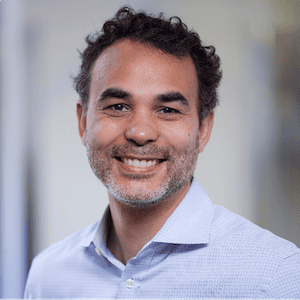-
Closing the Gap: Identifying Key Challenges for the Missing Middle SMEs in Francophone West Africa
Many small and medium-sized enterprises in developing countries fall into the “missing middle”: They're too big for microfinance and too small or risky for traditional finance. To better understand this sector and how to support it, the Dutch Good Growth Fund (DGGF) commissioned studies on the entrepreneurial ecosystems of Benin, Cote D’Ivoire, Guinea, Mali, Senegal and Togo. WDI's Ekta Jhaveri discusses the research with Julia Kho, knowledge manager at TripleJump, an investment management and advisory services firm that manages DGGF’s Investment Funds Local SMEs effort.
- Categories
- Investing
-
Why Impact Investing is the Next Big Move for Grameen America
David Gough of Grameen America says philanthropy will always be at the heart of the organization's funding, but the nonprofit saw impact investing as an untapped opportunity to fight gender inequity. In celebrating its 10-year anniversary of supporting female entrepreneurship and financial inclusion in the U.S., the group established its first Social Business Fund. The impact investing vehicle is allowing Grameen America supporters to directly invest in the success of more than 100,000 entrepreneurs and receive a financial return in exchange, writes Gough.
- Categories
- Impact Assessment, Investing, Social Enterprise
-
Why the Next Steve Jobs Could Be From Pakistan
Author and professor Elmira Bayrasli sees a big shift taking place among entrepreneurs in developing markets: They're seeking opportunities in their home countries, instead of fleeing to Western nations. In this video dialogue with WDI's Amy Gillett, Bayrasli, who wrote the book “From the Other Side of the World: Extraordinary Entrepreneurs, Unlikely Places,” offers several other insights on what startup founders are really looking for and what they need to achieve it.
- Categories
- Social Enterprise
-
The End of a Debate? India Highlights the Dominance of For-Profit Capital in Impact Investing
Can impact investing be as commercially viable as mainstream investing – or does it work better as a nonprofit model, or as a less-profitable niche in the broader investing space? This question remains widely debated, even as more empirical evidence has demonstrated the commercial success of impact investments. Disha Gandhi of Aavishkaar asserts that the long-running global debate over for-profit vs. nonprofit models in impact investing may be winding down, and India is a key case in point.
- Categories
- Impact Assessment, Investing, Social Enterprise
-
Coming of Age: Why Consolidation in the Impact Investing Industry is a Great Thing
With over $114 billion deployed into impact investments in 2017 and the total U.S. market at well above $8 trillion, the sector has gone decisively mainstream. And when that happens, industry consolidation is not far behind. In light of a recent wave of eyebrow-raising mergers and acquisitions, Stephanie Cohn Rupp at Tiedemann Wealth Management – which recently completed a merger of its own – says this trend should spark more excitement than concern.
- Categories
- Impact Assessment, Investing, Social Enterprise
- Tags
- ESG, impact investing
-
Wall St. Journal Financial Inclusion Challenge Seeks Innovative Enterprises – Application Deadline Feb. 23
Financial instability plagues millions of Americans. Many cannot pay their monthly bills and have no retirement savings or no idea how to manage what they do have. The Wall Street Journal has launched a Financial Inclusion Challenge aimed at both nonprofits and for-profit organizations who have socially impactful solutions to the problems of low- and moderate-income people in the U.S. The deadline for entry is Feb. 23.
-
Is Mobile Money Killing Off the Group Microfinance Model (And Would That Be Such a Bad Thing)?
SAJIDA Foundation, an NGO and microfinance provider in Bangladesh, recently took the bold step of going cashless. But shifting to mobile money meant the end of group meetings – the locus of traditional microcredit for decades. The NGO was betting on clients embracing this new approach, but after the initial rollout, it noted some troubling downsides along with the expected benefits. Ashirul Amin of BFA explores the pros and cons SAJIDA has encountered in its cashless journey, and how it is responding with a hybrid method that blends old and new.
- Categories
- Finance, Impact Assessment
-
What’s Ailing Sri Lanka’s Microfinance Industry – And Could Fintech Provide a Solution?
In Sri Lanka, microfinance interest rates can be as high as 72 percent – outpacing even loan sharks, whose rates average around 40 percent. This often traps clients in severe debt and perpetuates cycles of poverty – while MFIs themselves often enjoy high profits, low expenses and lack of competitive pressure. Suthaharan Perampalam and Mithula Guganeshan of Sparkwinn explore the potential of fintech (and better regulations) in changing this dynamic.
- Categories
- Finance, Impact Assessment










